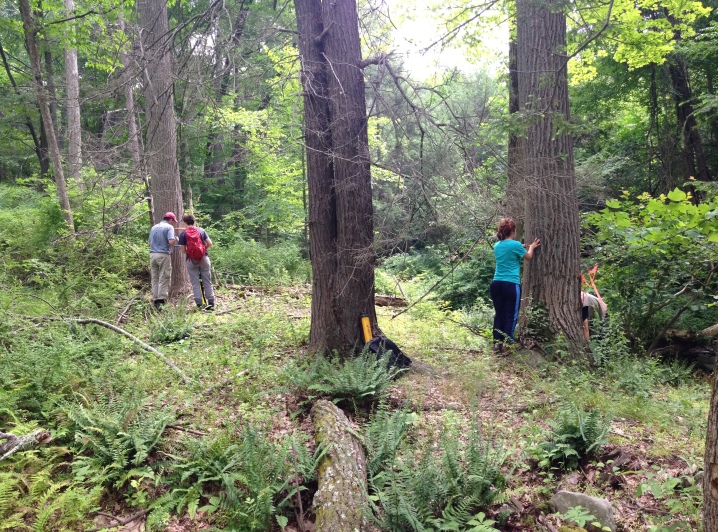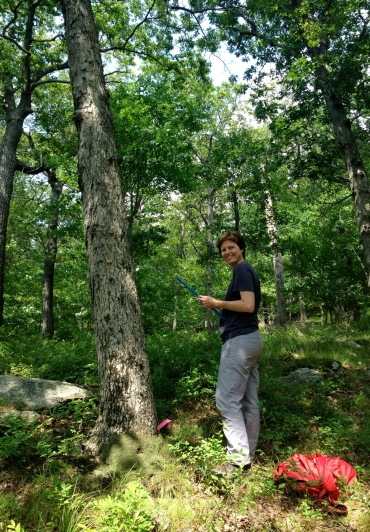Sponsored by the Climate Center of Lamont-Doherty Earth Observatory, the Swiss National Science Foundation, and the Harvard Forest, and led by pos-doctoral research scientist Mathieu Lévesque, Laia Andreu Hayles, Dario Martin Benito, and myself, we are investigating the isotopic signatures and wood anatomy of deciduous broadleaf trees in the Northeastern U.S.
Project Abstract
White oak (Quercus alba) and yellow-poplar (Liriodendron tulipifera) are important tree species with broad distributions across the Eastern US. These species have starkly contrasting drought–coping strategies in their stomatal conductance. Differences in stomatal conductance might differentially record isotopic signals of the fixed carbon and oxygen atoms. Stable isotope ratios in tree rings provide climatological and physiological information that are not available from tree-ring traditional metrics or ecophysiological experiments. We will generate annually resolved carbon (d13C) and oxygen (d18O) stable isotopes chronologies from tree-rings from these two contrasting species with a continuous time-span from 1960 to 2012, which includes an extreme drought in the 1960s and two wet episodes in 1970s and 2000s, plus an additional drought from 1905 to 1915. Our innovative project will address issues of stationarity of paleoclimatic reconstructions by exploring if isotopes are better proxies of past climate than ring widths, the traditional proxy of drought in the Eastern US. Second, we will test the novel hypothesis that using isotopic data from significantly different tree physiologies can improve paleoclimatic reconstructions, which not been attempted previously in tree-ring research to our knowledge. Our project has implications for global hydrological and carbon cycles as well as vegetation-atmosphere interactions through transpiration.
Publications
Levesque, M., L. Andreu-Hayles, W. K. Smith, A. P. Williams, M. L. Hobi, and N. Pederson. 2019. Tree-ring isotopes reflect satellite-based net primary productivity estimates at the biome scale. Nature Communications doi: 10.1038/s41467-019-08634-y. Media Coverage: [Nexus, Science Times, EcoWatch]
Levesque, M., L. Andreu Hayles, and N. Pederson. 2017. Water availability matters more than CO2 and acid deposition for growth in temperate mesic forests. Scientific Reports doi: 10.1038/srep46158.


